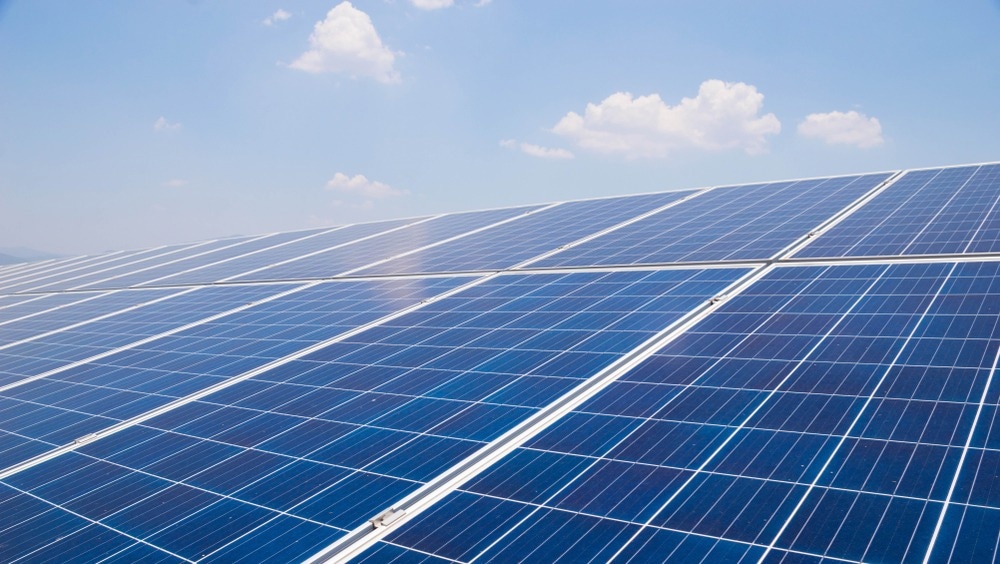As the effects of climate change continue to be the most pressing issue in science, and governments across the globe attempt to limit the release of greenhouse gases, the need for alternative energy sources has never been greater.
It is unsurprising, perhaps, that energy from the sun (solar energy) is the primary among these alternative energy sources. After all, without solar energy, life itself would not be possible; energy from the sun streams down to our planet at no cost, with the vast majority going completely unutilized.
Some complications remain when it comes to harnessing the energy of the sun. Scientists and engineers are currently working to devise the most efficient solar panels, the first step in capturing solar energy to transform it into electricity.
Even with this effort, currently, the most efficient commercially available solar panels operate at around 21% to 22% efficiency at their optimal performance. That means that with present solar panel technologies, around 80% of solar energy incident upon them is lost.
The maximum theoretical efficiency limit for solar panels is currently set at 86.8%, but this falls to 68.7% when considering that solar power comes from an area of the sky limited to the size of the sun. Additionally, solar panels can only effectively harvest energy during the daytime.
What this means in practical terms is that it is vitally important to keep solar panels operating at maximum efficiency during daylight hours and during periods of favorable weather. Several problems can cause solar panels to stop working at maximum efficiency, including defects and damage to panels.
That means the inspection of panels is crucial, but where panels exist in large numbers, such as in solar farms, this can be expensive, and walking among panels runs the risk of damaging them further.
One possible solution to these problems is to inspect solar panels from the air with Unmanned Ariel Vehicles (UAVs) or drones equipped with high-definition cameras.
Drone inspection also allows more comprehensive views of solar panels and their surroundings at high resolutions than a ground-based inspection can allow. If there are undetectable problems by the human eye or high-resolution cameras, technologies like thermal mapping are used.

Image Credit: Lek Changply/Shutterstock.com
Why Is Thermal Mapping Important in Solar Cell Investigations?
One means of spotting these otherwise invisible defects is to look for patches of heat build-up with thermal mapping.
Region One Survey is a Scottish company allowing customers to do this by equipping drones with thermal cameras added to the mix to spot defects that the human eye and even the most sophisticated visual cameras alone can not spot.
Thermal mapping, as defined by Region One Survey, is the use of thermal imaging to detect the differences in temperature between objects, in the case of solar farms regions of temperature differences on solar panels.
Spotting areas that are either cooler or hotter than surrounding regions indicate defects in solar panels and localized decreases in efficiency. Hot spots on solar panels, in particular, indicate a region where energy is being dissipated from the panel rather than being generated.
Hot spots can be caused by a panel defect triggered by something as simple as shading from nearby objects or by the accumulation of dirt or dust. This means that the solar cells that make up solar panels are behaving as if they are consuming energy.
Hotspots are unstable and become more intense over time, which can also damage the material that comprises solar cells. As a result, that entire panel could eventually be nullified.
Using a thermal camera from an aerial vantage point, drone operators can view an entire solar array to detect potential problems before they become severe and possibly before they become either too expensive to fix or become damaged beyond repair.
Spotting both hot and cool spots can help solar panel operators spot areas where the build-up of dust or dirt is causing a drop in efficiency.
Solar panel inefficiency can also be caused by connection problems between solar panels that are caused by wires becoming damaged or corroded. Thermal imaging can also spot these areas of interconnection failures.
To allow solar farm operators to identify which panels are malfunctioning and the locations of persistent problems, Region One Survey also creates a geo-tagged image dataset of an entire solar panel farm.
The use of drones and thermal mapping may currently be in its infancy, just like solar technology itself. Still, the powerful combination of these methods may well be, in part at least, the key to a solar-powered future and the reduction of our reliance on greenhouse gases.
References and Further Reading
J. Nelson, (2003), The Physics of Solar Cells, Imperial College Press, ISBN 978–1–86094–340–9
De Vos, A., Pauwels, H. (1981) On the thermodynamic limit of photovoltaic energy conversion. Appl. Phys. 25, pp. 119–125. https://doi.org/10.1007/BF00901283
Region One Survey, [https://skykam.co.uk/]
Disclaimer: The views expressed here are those of the author expressed in their private capacity and do not necessarily represent the views of AZoM.com Limited T/A AZoNetwork the owner and operator of this website. This disclaimer forms part of the Terms and conditions of use of this website.